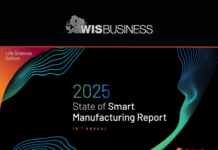Higher education leaders in Wisconsin stressed the importance of financial aid programs under the U.S. Department of Education continuing, even if incoming President Donald Trump follows through on his plan to eliminate the federal agency.
Speaking yesterday in Madison during a Wisconsin Technology Council luncheon co-sponsored by WisPolitics, Universities of Wisconsin President Jay Rothman said recent conversations with Wisconsin’s congressional delegation suggest it’s “not highly likely” that the agency will go away entirely.
“In their mind, there’s not the sense that there’s a vote in the Senate to do that,” Rothman said. “But with that said, there will be, we anticipate a lot of reorganization and restructuring. And the thing that I’m most concerned about is … the funding sources, particularly that support our students who are of the greatest need.”
Eric Fulcomer, president of the Wisconsin Association of Independent Colleges and Universities, said the Pell Grant program for financially disadvantaged students is “one of the most important programs” that affects WAICU’s member schools. While the program is administered by the U.S. Department of Education, it existed before the agency was created in 1979, Fulcomer noted.
“Whether or not the Department of Education continues in its current form, many of those programs are going to have to find a place,” he said. “The student loan program, which is now completely run by the federal government … that would have to go somewhere, whether that’s Treasury or somewhere else.”
Layla Merrifield, the newly appointed president of the Wisconsin Technical College System, also said Pell Grants are very important for the system’s students. She added the education agency plays “an incredibly important role” in running the Free Application for Federal Student Aid, or FAFSA program.
Meanwhile, Rothman also commented on the path ahead for the Universities of Wisconsin’s $855 million biennial budget request, after GOP Assembly Speaker Robin Vos in a recent interview said “we’re not going to give $1 billion to the university.” Rothman noted Wisconsin is ranked 43rd out of 50 states for its financial support for the UW, while all other Midwest states are in the top 10.
“A lot of our faculty and staff across our 13 universities are paid at levels that are 10% to 20% below the market … that’s the market for comparable institutions,” he said, adding “it’s a real impact in terms of our retention of talent long-term.”
Tech Council President Tom Still, who moderated the discussion, noted the state is expected to finish the 2023-25 budget with a $4 billion surplus. But Rothman said: “I don’t look at it in context of the surplus,” arguing funding for UW should focus on setting up Wisconsin for long-term competitiveness for decades to come.
“This is not an expenditure; this is an investment in future generations of Wisconsinites,” he said, adding legislators on both sides of the aisle want to do what’s right for the state, despite policy differences. “We’ve got to make our case. That’s on us.”
The discussion also touched on falling confidence in higher education, with panelists arguing higher ed institutions need to rebuild trust while making the case for their economic impact and importance. Rothman said a four-year degree is inarguably beneficial from a long-term earnings standpoint, while Merrifield added higher education across the board “has some work to do” on ensuring it’s delivering on what’s promised.
“If we aren’t delivering a program that leads to employment immediately following graduation, then we have a real problem,” she said. “Either that program needs to go away or needs to be configured, or needs to be reimagined to be something that’s relevant for the employers.”
The luncheon came a day after the National Science Foundation’s annual research rankings were released, showing UW-Madison moving up two spots to 6th in the country out of 920 public and private universities. The university exceeded $1.7 billion in annual research spending for the first time, the NSF Higher Education Research and Development report shows, marking a 13.7% increase over the year.
Rothman said “that moves the needle,’’ adding: “That changes our state, and that’s why that’s important. And I’m very, very proud of our flagship.”
See UW-Madison’s release on the research rankings and watch the video.






